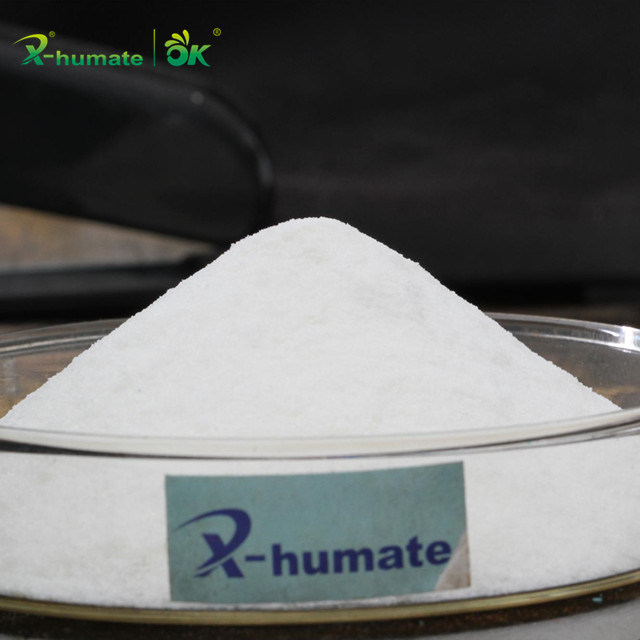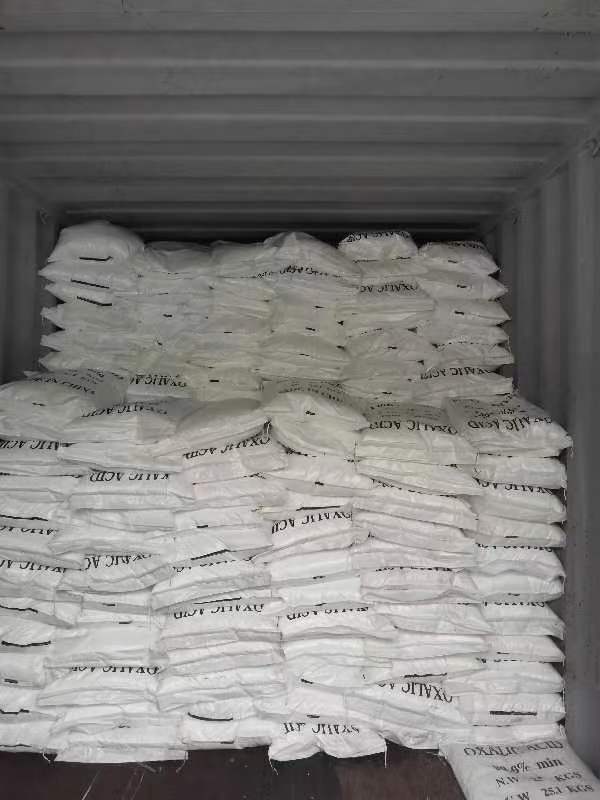Name Industrial Grade Color Dye Crystal 99.6% Hydrated Oxalic Acid Powder Uses
Synonyms Ethanedionic acid
Molecular Formula C2H2O4.2(H2O)
Molecular Weight 126.06
CAS Registry Number 6153-56-6
Melting point 98-102 ºC (dec)
Sublimation 157 ºC
Water solubility 138 g/L (20 ºC)
Application: Dyeing and Printing, Marble etc.
Oxalic Acid Powder Uses, White transparent crystal combining two crystal water, melting point: 101-102oC, specific gravity:1.653,easily sublimate at 100oC, easily dissolve in alcohol and water.
Oxalic acid is a dicarboxylic acid of organic acids and one of the strong acids in organic acids.

| Purity | 99.6%min. |
| Sulphate | 0.05%max. |
| Heavy metals (Pb+) | 0.001%max. |
| Ferrous (Fe3+) | 0.001%max. |
| Chloride (Cl-) | 0.001%max. |
| Ignition residue(850 oC) | 0.06%max. |
Packing: In plastic woven bag with inner PE bag 25kgs net. White Bag or Grey bag
Capacity: 25MT/20FCL without pallet
Storage: Oxalic acid should be stored in a cool, dry, well-ventilated area in tightly sealed containers.
Oxalic acid also has reducibility, and is easily oxidized to carbon dioxide and water with oxidants, and neutralizes it with alkalis to generate oxalate.
Oxalic acid is widely used in the chemical industry to manufacture pentaerythritol, cobalt oxalate, nickel oxalate, basic green, iron and steel, soil analysis kits, chemical reagents, etc.
There are also two major applications of oxalic acid in printing and dyeing. The editor will briefly introduce it to you today.
1. As an agent for washing and removing rust spots on fabrics
Iron is subjected to the action of oxygen and water in the atmosphere to form a complex compound called rust.
The composition of rust varies with the conditions in which it was formed, but rust contains ferric ions. There are rust spots on cotton fabrics, which form defects and must be removed.
Oxalic acid is a practical agent for washing and removing rust stains on cotton cloth.
The principle is roughly that oxalic acid can form ferric oxalate anion chromium compound [F(C2O4)3]--- with ferric ion Fe+++. This anion complex is easily soluble in water, so rust can be washed away with oxalic acid.
The dosage of oxalic acid is 20 grams/liter, and acetic acid (98%) is about 30 milliliters/liter.
Oxalic acid easily damages the fiber. After the cotton cloth is treated with oxalic acid, the oxalic acid remaining on the cotton fiber needs to be thoroughly washed with clean water. If it is not washed, when the cotton is dried, the dilute oxalic acid solution will become concentrated acid, which will quickly and seriously damage the fibers and cause holes, which must be paid attention to.
The rust spots on nylon fabrics can cause yellowing of the fabrics, which can also be removed with oxalic acid.

2. Used to eliminate nitrous gas in the color development of Indicolin dyes
When the Indicocin dye sodium nitrite method is used for direct printing with Naphtol dye, nitrous acid is generated when the color is developed by sulfuric acid, which causes Naphtol AS sodium salt on the cloth to form a reddish-brown precipitation, resulting in white ground not white. .
In order to eliminate nitrous acid, sometimes 1-2 grams/liter of oxalic acid is added to the sulfuric acid chromogenic solution to replace reducing agents such as formic acid, urea or thiophanate, and the nitrous acid is reduced to nitrogen gas to prevent HNO2 from causing AS to turn brown.